Choosing the right baseball glove for your child can make a huge difference in their performance and enjoyment of the game. With so many options available, it can be challenging to know where to start. Whether you’re looking for something durable like the Wilson A2000 or a more beginner-friendly option like the A550, it’s essential to consider your child’s age, position, and level of experience. This guide will help you navigate through the top 9 best baseball gloves for kids, offering valuable insights into glove types, materials, and sizing, so your child can break-in their glove and feel confident on the field.

How to Choose the Right Baseball Glove for Kids
Picking the right glove for your child isn’t always a simple task, but it’s super important for their game and confidence. Start by understanding the position your child will play. Different positions demand different glove features. For example, infielders need a shallow pocket for quick transfers, while outfielders benefit from a deeper pocket for those high-flying catches.
What Types of Baseball Gloves Are There?
Baseball gloves are designed with specific field positions in mind, and choosing the right one can significantly improve your child’s performance on the field. Each type of glove is crafted to support the unique movements and responsibilities of different positions.
Catchers Mitts
These gloves are specially designed to handle the high-impact nature of catching fast pitches. They feature extra padding and a closed web to absorb the force of the ball and provide a secure, protective fit. The mitt’s shape allows catchers to quickly catch and throw the ball with precision.
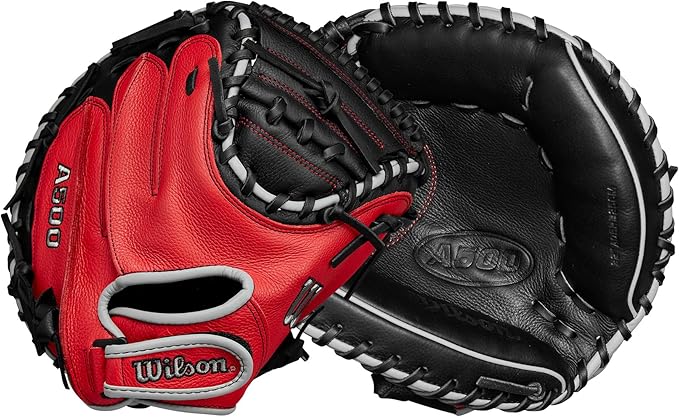
First Baseman’s Mitts
Slightly longer than regular gloves, first baseman mitts have a deeper pocket and a flat, extended design. This makes it easier for players to scoop low or errant throws from infielders. The extra length and webbing design also help secure the ball during quick plays.
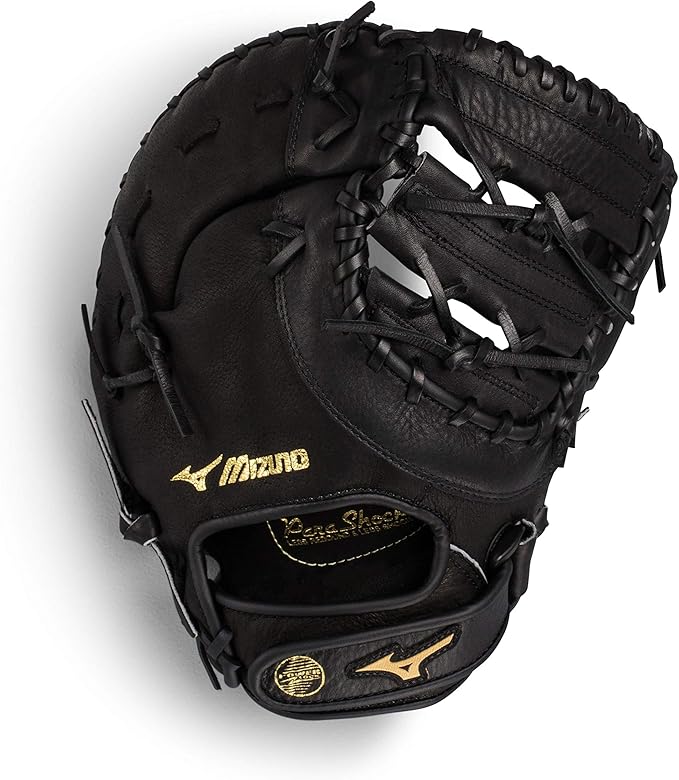
Infield Gloves
Infield gloves are typically shorter with a shallower pocket, allowing for quick transfers from glove to hand. These gloves are designed for fast reactions and quick throws, essential for positions like shortstop, second base, and third base, where speed and agility are key.

Outfield Gloves
Outfield gloves are generally larger with a deeper pocket to help players catch high, fly balls. The longer design allows for better reach and control, helping outfielders secure catches on those hard-to-reach balls. The deeper pocket helps cushion the ball, making it easier to hold onto during fast-paced plays.
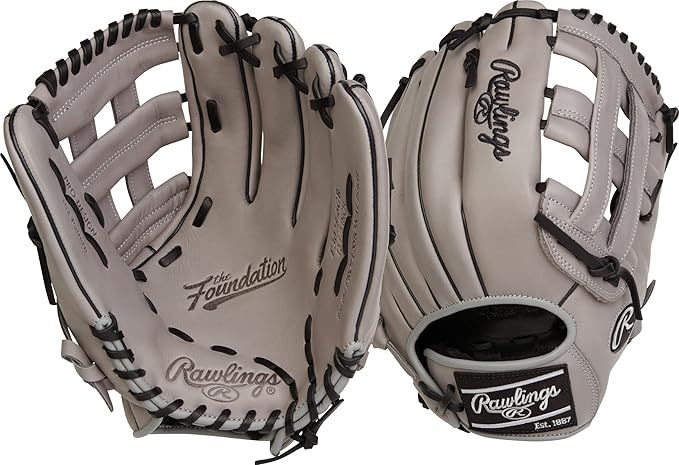
Material Considerations
The material of the glove also plays a significant role in its performance.
Leather Gloves
Leather is the go-to material for durability and performance. These gloves often improve with age as they break in, becoming more flexible and comfortable over time. While they tend to be more expensive, leather gloves provide a professional feel and last much longer, making them a great investment for serious players.
Synthetic Gloves
These gloves are a popular choice for younger players due to their lightweight nature and ease of break-in. Synthetic gloves require less time to become game-ready and are often more affordable, making them an ideal choice for beginners or recreational players.
Fit is Everything
A glove that’s too big or too small can hinder your child’s performance and enjoyment. The trick is to ensure the glove is snug but not tight. A good fit allows your child to have quick hands and a solid grip on the ball. Look out for adjustable wrist straps which can help in getting a better fit.

Material Matters Too
Opt for a glove crafted from quality leather, as it’s more durable and offers better performance. Some kids might find softer, synthetic materials more comfortable at first, though they might wear out quicker than leather ones.
Using Size Charts
Using size charts helps make the selection process smoother. Many brands provide detailed size charts, breaking down the size necessary based on a child’s age and hand size. Ropes and measuring tapes are pretty handy here, ensuring you don’t just eyeball it.
Position-Specific Features
Different positions demand different glove features. For example, infielders need a shallow pocket for quick transfers, while outfielders benefit from a deeper pocket for those high-flying catches. Understanding your child’s position is key to choosing the right glove.
Explore Various Brands
Don’t just stick to big names; sometimes niche brands offer great value too. Check for economic options that offer decent quality without breaking the bank. Your child will likely grow out of the glove, so keep that in mind when budgeting.
Preference Matters
If your kid is old enough, let them try a few options before settling down. The feel of the glove is crucial for confidence on the field. It has to feel like an extension of their hand to truly be effective.
Top 9 Best Baseball Gloves For Kids
Choosing the right baseball glove for your child is essential to ensure comfort, durability, and performance on the field. Here are nine of the best baseball gloves for kids, ranging from beginner-friendly options to more advanced models:
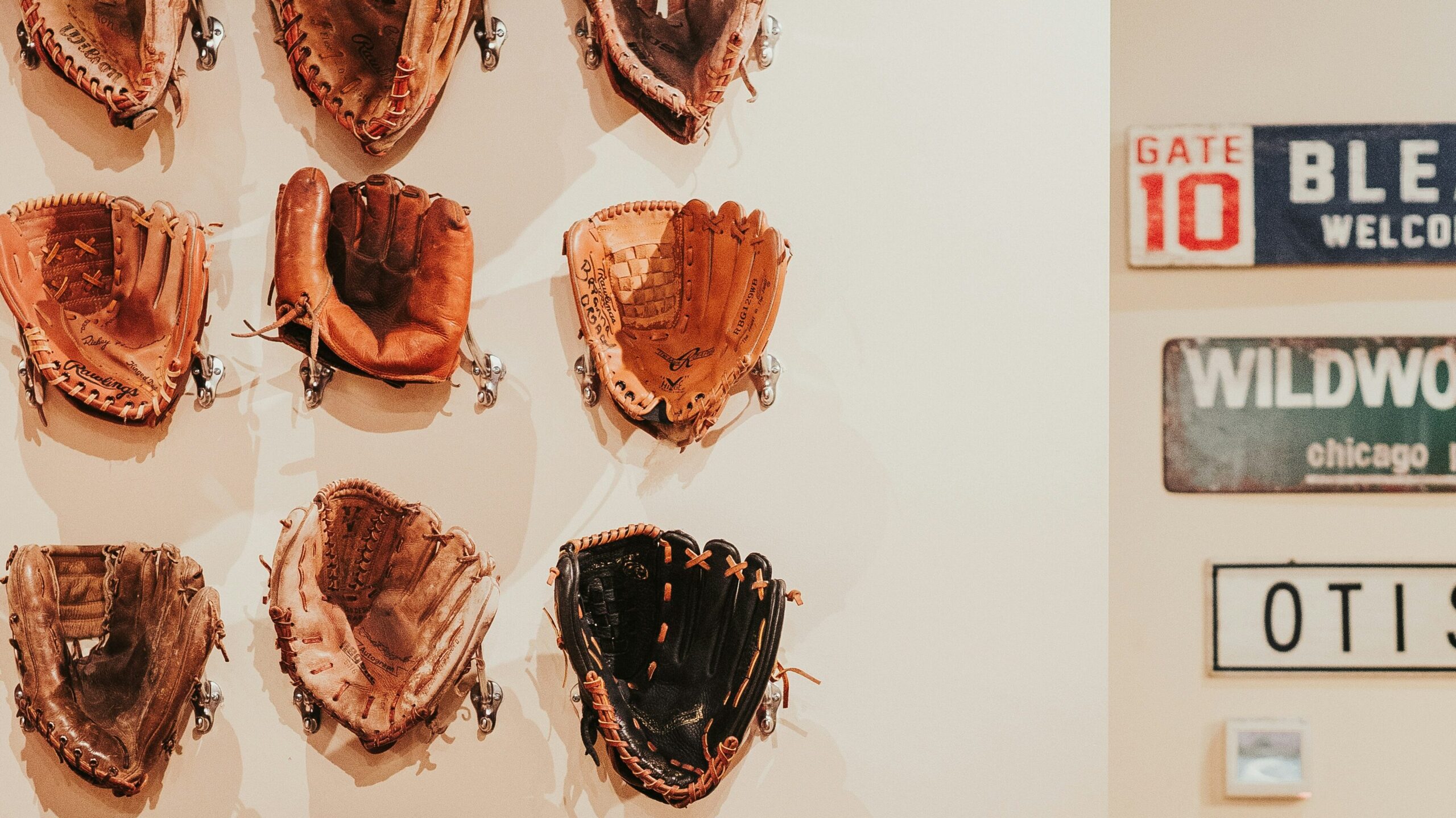
1. Rawlings Renegade Youth Baseball Glove
Rawlings’ Renegade series offers a perfect balance of quality and affordability. Its easy-to-close design and comfortable fit make it ideal for young players just starting out.
Best for: Beginner to intermediate players.
2. Wilson A2000 Youth Baseball Glove
The Wilson A2000 is a high-quality glove known for its durability and professional feel. It’s a great investment for players looking for a glove that will last through years of use. We did an entire review of the A2000 that you’re going to want to check out.
Best for: Serious young players.
3. Mizuno Prospect Select Youth Baseball Glove
Made with top-quality leather, the Mizuno Prospect Select provides a soft, game-ready feel with a deep pocket that helps younger players catch with ease.
Best for: Newer players seeking comfort and durability.
4. Easton Ghost Youth Baseball Glove
With its lightweight design and easy break-in, the Easton Ghost is perfect for young players. It offers flexibility, comfort, and solid performance.
Best for: Players needing a glove that’s easy to break in.
5. Franklin Sports Teeball Glove
Designed for the youngest players (ages 4-7), the Franklin Sports Teeball Glove is soft, lightweight, and ready to use right out of the box. It’s also an affordable option for new players.
Best for: Beginners and younger kids.
6. Rawlings Player Preferred Youth Baseball Glove
This glove offers great durability and comfort at an affordable price. The larger pocket helps younger players secure the ball more easily, making it a great choice for kids new to the game.
Best for: Players seeking a reliable, budget-friendly glove.
7. Wilson A500 and A550 Youth Baseball Glove
Known for being lightweight and easy to break in, the Wilson A500 and A550 are perfect for younger players. they’re soft feel and comfortable fit make it an excellent choice for kids who are still learning the game. We did an entire review of the A550 you’re going to want to check out.
Best for: Young players looking for comfort and ease of use.
8. Louisville Slugger Omaha Youth Baseball Glove
The Omaha glove from Louisville Slugger combines quality leather with a lightweight design, making it an ideal option for kids just starting to play baseball.
Best for: Beginners who want a durable and easy-to-use glove.
9. Under Armour Players Series Youth Baseball Glove
The Under Armour Players Series glove is soft, flexible, and perfect for younger players. Its comfortable fit and durability make it a great choice for first-time baseball players.
Best for: Kids who need a glove that’s both comfortable and durable.
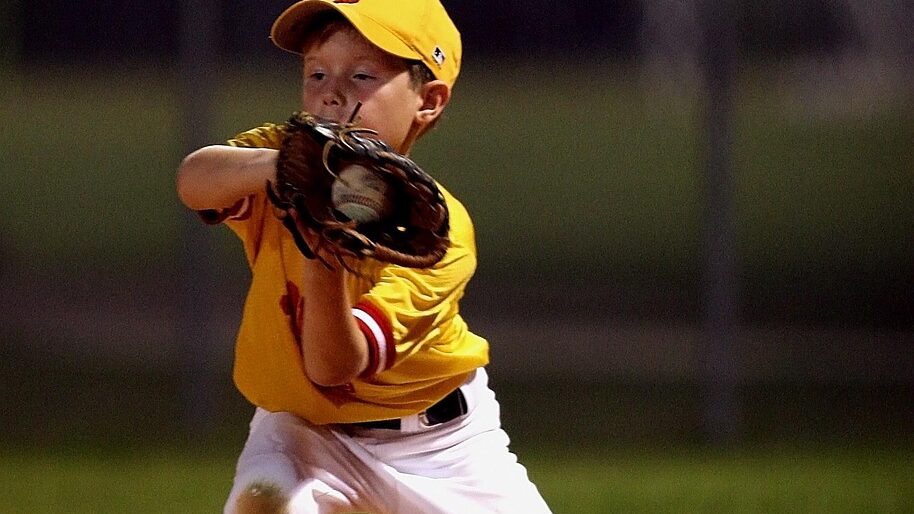
How to Find the Right Size Glove for My Kid?
Getting the right size glove is essential for your child’s comfort, safety, and performance on the field. An ill-fitting glove can hinder their ability to catch, throw, and focus on the game. Fortunately, finding the right size doesn’t have to be complicated. Here’s how to do it:
Measure Your Child’s Hand
Start by measuring your child’s hand from the tip of their longest finger to the base of their palm. This simple measurement provides a good indication of the glove size they’ll need. Most gloves are sized in inches, and the measurement of your child’s hand will correlate with the appropriate glove size.
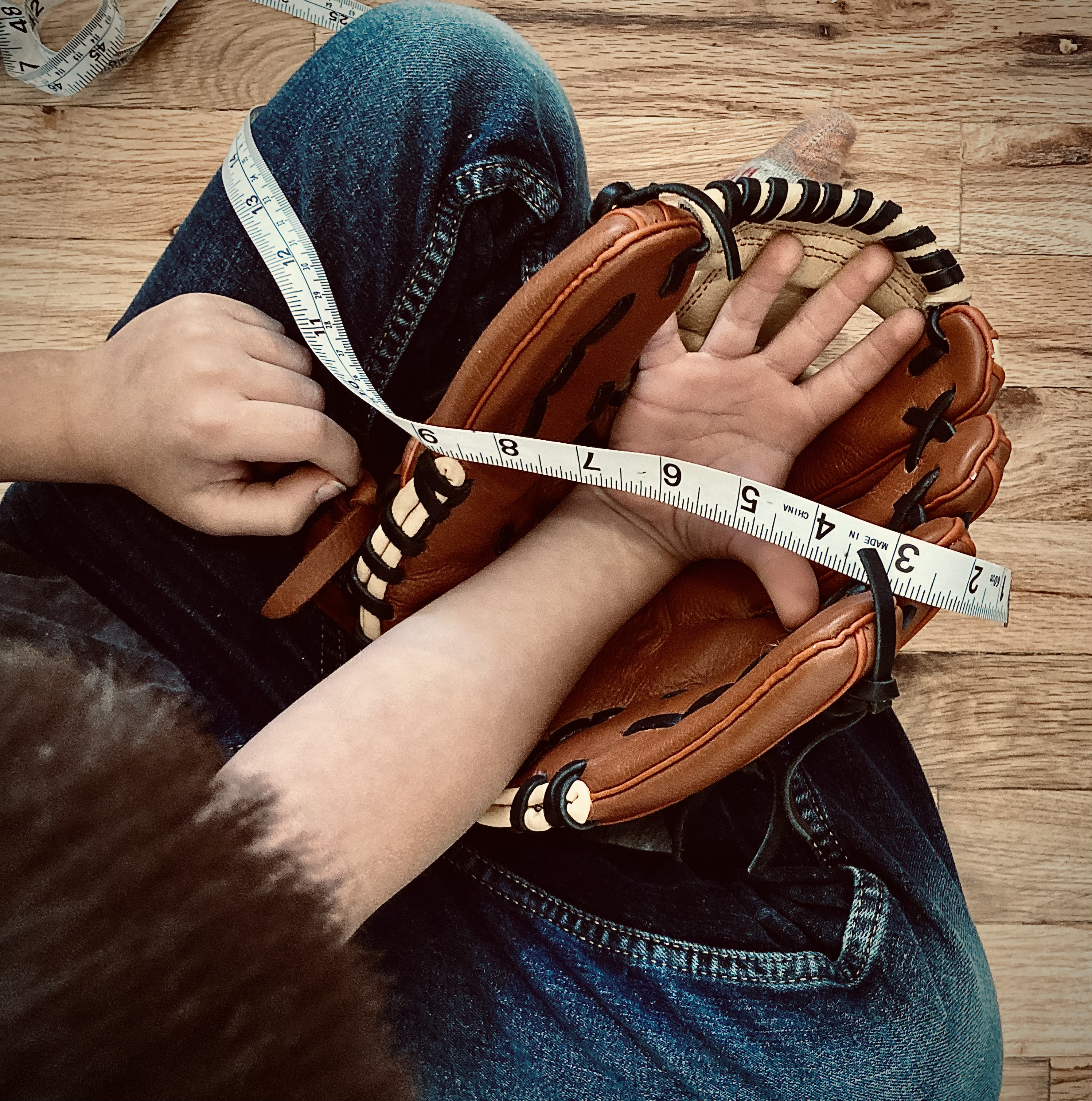
Age-Based Glove Sizing Guidelines
While hand size is key, age is another helpful guideline when determining glove size. Here’s a rough breakdown of what sizes tend to work best for certain age groups:
- Ages 5-6: Typically, kids in this age group will be most comfortable with gloves around 10-10.5 inches.
- Ages 7-9: Gloves between 10.5-11.5 inches are usually the best fit for this age range.
These are just general guidelines, so keep in mind that every child’s hand is unique, and some players may need a slightly larger or smaller glove depending on their hand shape and playing style.
Avoid Buying a Glove They’ll “Grow Into”
A common mistake is buying a glove that’s too large, thinking it will save money in the long run as your child grows. However, a glove that’s too big can hinder their ability to catch and throw effectively, which can frustrate them and affect their technique. It’s always better to buy a glove that fits well now, even if it means purchasing a new one as they grow.
Try on Gloves Before Purchasing
If possible, take your child to a store to try on a few gloves before making a purchase. They should be able to open and close the glove easily, with the fingers and palm fitting snugly but not too tight. A good fit is vital for catching and fielding, so it’s important that the glove feels comfortable on their hand.
Check Customer Reviews for Online Purchases
If you’re shopping online, it’s helpful to read customer reviews to get a sense of how the glove fits. Some brands may run small or large, and these reviews can give you valuable insights into the glove’s sizing and comfort. Look for reviews from other parents with children of similar age or hand size to gauge if the glove runs true to size.
Use a Sizing Chart from the Brand
Many glove brands offer detailed sizing charts that can make finding the right fit even easier. These charts often include measurements for different age groups, as well as the specific glove sizes they recommend. Many companies also offer printable charts or online guides to help you measure your child’s hand accurately.
Conclusion: Choosing the Right Baseball Glove
Finding the perfect glove for your child doesn’t have to be overwhelming. By understanding the different types of gloves, such as infield, outfield, and catcher’s mitts, you can make an informed decision that aligns with your child’s needs. Whether you opt for the high-performance Wilson A2000, a starter like the A550, or a lightweight synthetic glove, the right choice will enhance their comfort, confidence, and skill development. Remember to choose the right size, consider position-specific features, and don’t forget the importance of breaking in your glove for a better fit. With these tips in mind, your child will be all set to make plays and enjoy the game!


I love how you highlighted the importance of choosing the right baseball glove for kids! It’s amazing how a good glove can boost a young player’s confidence and performance on the field. I remember when I was a kid, having the perfect glove made all the difference in my game.
Your tips on considering size and material are spot on! It’s so crucial to find something that fits well and feels comfortable. I also think it’s important to involve kids in the selection process—let them feel the gloves and try them on. It makes them more excited about playing!
It’s so true! I recently just bought my 6 year old a new glove and we spent about 20 minutes in the store just trying on different gloves to make sure they fit well and that he liked the style. I knew which one would like be the better choice for him but i ultimately let him pick the one he felt most comfortable with and so far he loves it!
I really appreciate how you break down the different types of baseball gloves for kids and explain what to look for when choosing one. The section about sizing stood out to me—it’s so important to get the right fit, especially for younger kids just learning the game. I never realized how much the position a child plays could impact the type of glove they need. That was a lightbulb moment for me!
Thank you so much for your comment! I’m really glad you found the guide helpful. Getting the right fit for younger kids is so important—it can make such a difference in their comfort and confidence on the field.
I love hearing that the part about position-specific gloves was a lightbulb moment! It’s one of those things that isn’t always obvious at first but can really help kids as they learn the game and find their role on the team.
If you have any other questions or just want to chat more about baseball gear, I’d be happy to help. Here’s to a great season for you and your little player! ⚾
I enjoyed reading this! I really appreciate how you broke down the best baseball gloves for kids, it’s super helpful for parents trying to navigate all the options. The tips on sizing, materials, and even position-specific recommendations make it so much easier to find the perfect fit for young players. I also love that you included options for different skill levels, ensuring every kid can find a glove that suits their needs and helps them enjoy the game. Thanks for sharing such a practical and detailed guide, it’s a great resource!
Thank you so much for your kind words! I’m really glad you found the guide helpful. Choosing the right glove can feel overwhelming with all the options out there, so it’s great to hear the tips made the process a little easier.
I wanted to make sure there was something for everyone—whether it’s a beginner just starting out or a more experienced player looking for an upgrade. Knowing that the guide might help kids feel more confident and enjoy the game more really makes my day.
If you ever have questions or just want to talk baseball gear, I’m always happy to help. Wishing you and your young player an amazing season ahead! ⚾
As a baseball coach myself, I see kids every spring show up with a glove that is either too big or too small, and it most definitely affects their confidence and the way they play.
All of your tips to consider when choosing a glove are spot on, from quality, pricing, positions, features and size charts, all great things to check out before purchasing.
I’ve purchased both Wilson A series gloves and Mizuno Prospect for my boys. For the younger guys, we tried A series less than 2000 (a little less in quality and price) and were happy with the quality and functionality. Mizuno Prospect gloves seem to be popular in our local league as they seem to be softer and easier to close for some.
I enjoyed reading your article on gloves for these youngsters and appreciated all your insight!
Thank you so much for sharing your experience as a coach and for your kind words about the article—I’m thrilled you found it helpful! Your perspective is invaluable, especially since you see firsthand how glove selection impacts young players on the field.
I couldn’t agree more that showing up with the wrong-sized glove can affect a child’s confidence and performance. It’s often an overlooked detail, but as you’ve pointed out, it can make all the difference.
It’s great to hear about your experiences with the Wilson A series and Mizuno Prospect gloves. Your approach of choosing the A series gloves below the 2000 line for younger players strikes a perfect balance between quality and cost, especially for kids still growing or just starting out. And you’re absolutely right about Mizuno Prospect gloves—many parents and coaches appreciate their softness and the ease of closure, which can be game-changing for beginners trying to build confidence.
Thank you for taking the time to share your insight and add value to the discussion. Hearing from someone with your coaching background reinforces the importance of thoughtful glove selection for kids. I hope the upcoming season goes well for you and your players!
Thank you for this comprehensive guide on choosing baseball gloves for kids. Your emphasis on understanding the player’s position and the importance of glove material and fit is particularly helpful. The recommendations for specific models like the Rawlings Prodigy Youth Glove and Wilson’s A2000 series provide practical options for parents navigating this decision.
I have a few questions:
Break-In Period: How long does it typically take to break in a new glove, and are there specific techniques to expedite this process without compromising the glove’s quality?
Maintenance Tips: What are the best practices for maintaining a baseball glove to ensure its longevity, especially for young players who may not be as diligent with equipment care?
Transitioning Gloves: As children grow and their skills develop, how often should parents consider upgrading their child’s glove? Are there signs that indicate it’s time for a new glove beyond just physical fit?
Your insights would greatly assist parents in making informed decisions and ensuring their children have the best experience on the field
Thank you for your thoughtful comment and for engaging with my article! I’m glad you found the guide helpful. You’ve brought up some excellent questions that are key to helping parents make informed decisions. I’ll like to another article I wrote about breaking in and caring for a glove! Let me address each of them:
Break-In Period
Breaking in a glove can vary depending on the material. For most youth gloves, especially those made from softer leather or synthetic materials, the break-in period is relatively short—around 1-2 weeks of regular use. Higher-quality gloves, like the Wilson A2000 series, may take longer, sometimes several weeks of consistent play.
To expedite the process without compromising the glove’s quality:
Play Catch: The simplest and safest method—just use the glove! Repeated catching helps mold the pocket naturally.Glove Oil/Conditioner: Lightly apply a glove-specific conditioner to soften the leather, but avoid over-saturating as it can weaken the material.Glove Mallet: Use a mallet to simulate ball impacts on the pocket and crease areas.Wrap it Right: Place a ball in the pocket, close the glove around it, and secure it with a band overnight. This helps shape the pocket.
Avoid extreme methods like microwaving or soaking in water, as these can damage the glove.
Maintenance Tips
Proper care goes a long way in extending a glove’s life, especially for young players:
Clean Regularly: Wipe off dirt and debris with a damp cloth after each use. For deeper cleaning, use a glove-safe leather cleaner.Condition Periodically: Apply glove conditioner every few months to prevent the leather from drying out or cracking.Store Properly: Keep the glove in a cool, dry place—avoid leaving it in a hot car or damp areas. Use a glove wrap or place a ball in the pocket to maintain its shape during storage.Inspect Laces: Check the glove laces for wear and tear. Re-lacing when necessary can prevent the glove from falling apart.
Transitioning Gloves
As children grow and improve their skills, upgrading their glove is inevitable. Signs it’s time for a new glove include:
Physical Fit: The glove feels too tight or small, making it hard to catch comfortably.Performance Needs: As your child specializes in a position, they may need a position-specific glove (e.g., a smaller glove for infielders, a larger one for outfielders).Wear and Tear: If the glove’s padding, leather, or laces are too worn to repair, it’s likely time for a replacement.
On average, you might need to upgrade every 1-2 years for younger players, especially during growth spurts. However, for higher-quality gloves that can handle more wear, proper maintenance can extend their usability.
I hope this helps! If you have any more questions or need further recommendations, feel free to reach out. It’s always rewarding to help parents and players navigate these important decisions.
This article does a fantastic job breaking down the essentials for picking the right glove! I completely agree that fit is everything. It’s amazing how much confidence a well-fitted glove can give a young player. I also appreciate the reminder about not buying gloves that kids will ‘grow into.’ I’ve seen too many kids struggle with oversized equipment that takes the fun out of the game. The brand recommendations are super helpful too; Rawlings and Mizuno are solid picks for beginners, and Wilson’s A2000 is definitely a worthy investment for serious players. Overall, this guide strikes a great balance between practicality and expert advice!
Thank you! Getting my first A2000 was a significant moment in my childhood. I remember the excitement and confidence it gave me, almost as if I were on the path to becoming a professional player. The importance of having the right equipment cannot be overstated, especially when it comes to a glove. Fit truly is everything in this regard. When a child finds a glove that fits perfectly and feels comfortable, it transforms their experience. They’re not only more confident, but also more enthusiastic about engaging in practice, playing catch, and tackling as many ground balls as possible. A good glove can ignite a passion for the game and encourage them to develop their skills further. It’s amazing how the right piece of equipment can fuel a young athlete’s ambition and love for the sport.
Thank You! I remember growing up and the first time i got an A2000 I felt like I was gonna be a pro! fit really is everything. If the kid feels comfortable in the glove and it fits well they’re going to be eager to practice, play catch, and get as many ground balls as they possibly can!